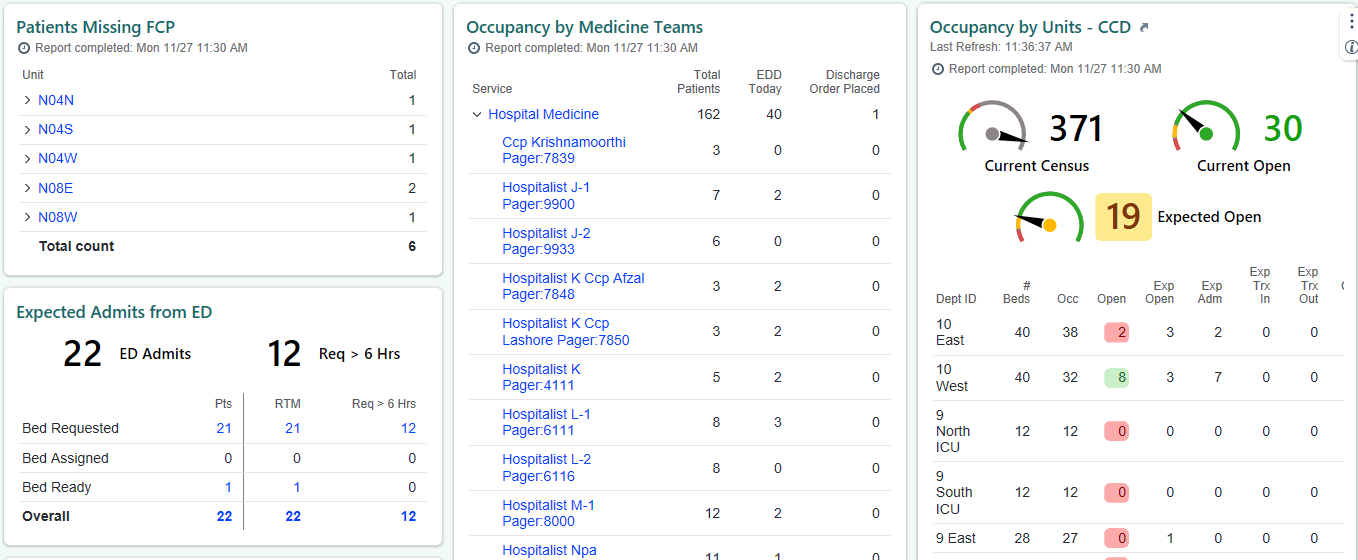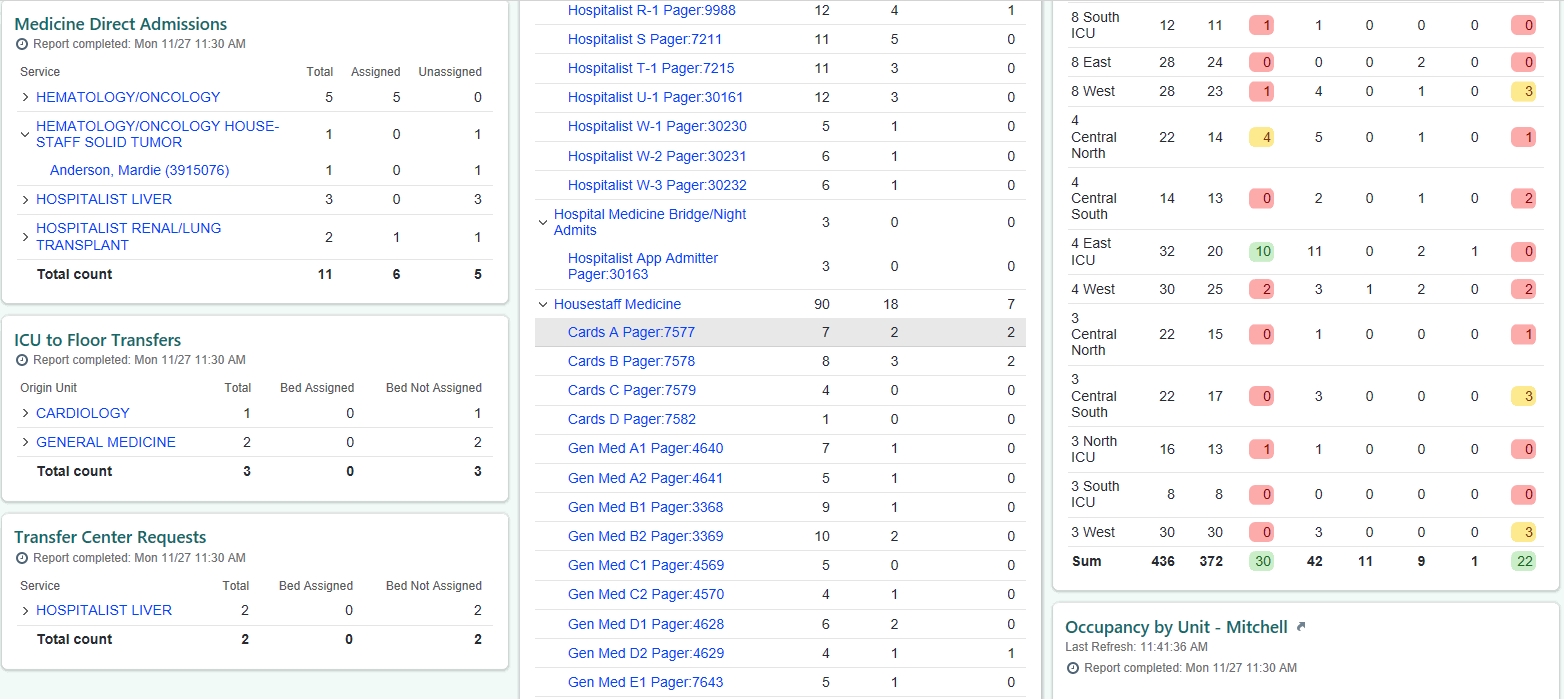Background: A hospitalist “triagist” physician assesses patients for admission and supports the transition of patients from the outpatient to inpatient setting [1]. Active bed management and triaging by hospitalists have been reported to improve emergency room (ER) patient flow and ER to ICU throughput, while hospitalist-directed transfer and admission of stable ER patients may shorten ER length of stay [2-4].At our academic medical center, our triage service assesses and distributes admission requests to 11 unique medicine services, including hospitalists that account for about 30% of inpatient care, often caring for 160 patients daily. Additionally, our hospital has implemented a new geographic co-location initiative wherein patients are assigned to cohorted beds based on their service and provider team. With rising inpatient volumes and the new co-location model, the triagist job is increasingly demanding.
Purpose: On each shift, triagists regularly assess a high patient volume and are required to make rapid-fire decisions based on clinical information, service line capacity, and hospital bed availability. In order to ease the practice of triaging patients and to improve geographic co-localization of patients, we developed a dashboard to provide real-time bed availability, census information by care teams, and pending ER admissions, direct admissions, and transfer requests. Additionally, admission and transfer requests come from various sources and are not always communicated to the triagist, which can lead to delays in care and add unnecessary complexity to the work. By bundling bed and staffing logistics with incoming admission requests, we hope to improve the ease and accuracy of matching bed assignments with service availability.
Description: The triage dashboard was developed in the Epic electronic health record (EHR) in conjunction with an information technology analyst (MM). The dashboard utilizes refreshable reports, each serving a unique function, to display components specified by the design team. Components include Occupancy by Medicine Team (displays number of patients by provider team and pending discharges), Occupancy by Units (displays bed occupancy data by hospital units), Expected Admits from ED, Medicine Direct Admissions, ICU Transfer Request, Transfer Center Requests, and Patients with Missing FCP (First Contact Provider) (Figure 1, 2). The dashboard was released for general use and promoted on October 19, 2023. Since then, there have been 12 unique users, excluding the project team, with 28 logged events. Informal feedback from 5 users in a brief survey of hospitalists with recent triage shifts rated that the dashboard was most helpful in co-location of patients and prediction of patient flow, while 8 of 11 respondents plan to use the dashboard on future triage shifts.
Conclusions: We developed a new tool in the form of an EHR dashboard that allows hospitalist triagist to quickly review relevant patient, bed, and care team logistics in real time to support efficiency in workflow and co-location priorities. The dashboard is slowly gaining use with positive feedback in the early phase. We plan to continue socialization efforts and track usage and feedback.


